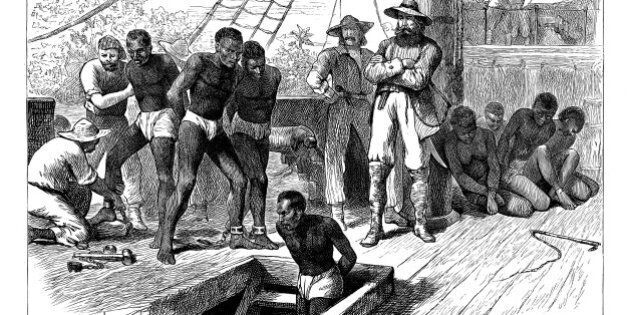
It is a fact of history that African people were enslaved, sold and brought to North America, Europe and the Caribbean through the exploitative and brutal economic enterprise of slavery, slave-trading and empire-building.
To rephrase the words of the great philosopher Jean-Jacques Rousseau, "Africans were born free, yet everywhere they were enslaved." This enslavement essentially ejected African slaves from the human community.
Slavery coincided with the rise of European empire building, with many European powers, notably Britain, France, Spain, the Netherlands and Portugal, participating in the slave trade in their empires up to the 1800s. Denmark and Sweden also had colonial possessions and slaves, while the Americans and Brazilians, who did not have colonial possessions, also had significant populations of enslaved Africans.
These empires participated in the exploitative practices of plantation slavery, chattel slavery, domestic slavery, and the use of the resources, raw materials and coerced unpaid labour of Africans to better the economic well being of Europe and the Americas.
The British transatlantic slave trade was responsible for about 25 per cent of the people removed from Africa through captivity and the treacherous "middle passage." It is estimated that more than 12 million enslaved Africans were brought to the Americas through the transatlantic slave trade.
During the years of the slave trade, my ancestors were treated as chattel goods. Their enslavement was physical, economic and mental. Consequently, the legacies of centuries of racialized enslavement continue to have a lingering impact on the continent of Africa, the African diaspora and Canadians of African descent, to this day.
Manifestations of racism against people of African origin; the breakdown of the African family; the racialization of poverty; criminalization and high rates of incarceration in the penal system; "shade-ism"; and limited access to opportunity and to full participation by those already lacking in resources, are some of the cascading effects of slavery that still undermine the full socioeconomic development and vitality of African peoples.
In most public discourse, shifting the blame onto African people, who face what I term "post-slavery affective syndrome," fails to take into account that as long as there remain the entrenched conditions created by a white-black binary of development-underdevelopment; profit-exploitation; insider-outsider; and freedom-servitude, the victimization of African people of every generation and every continent will continue.
The world has commemorated the anniversary of Britain's abolition of the transatlantic slave trade in 1807, and America followed in 1808, with other European nations almost a decade later.
Abolition of the slave trade, however, did not abolish slavery, which continued in British possessions until 1833, in the United States until the end of the Civil War in 1865, and in Brazil until 1888.
The text of a United Nations resolution in late 2006 recognized "the slave trade and slavery as among the worst violations of human rights in the history of humanity, bearing in mind, particularly, the scale, duration and lingering impact." It also acknowledged that the institution of slavery is at the heart of "profound social and economic inequality, hatred, bigotry, racism and prejudice, which continue to affect people of African descent today." In March 2015, the United Nations Headquarters in New York unveiled a permanent memorial 'The Ark of Return', to memorialize, honour and remember the Victims of Slavery and the Transatlantic Slave Trade. Hopefully, this monument at the UN Headquarters will encourage meaningful conversations and action on the legacies of enslavement and its impact generations later as the United Nations also commemorates the International Decade of People of African Descent from 2015-2024. The monument along with public education on the legacies of slavery is an important part of fostering awareness of human rights.
During Canada's early periods of French colonial rule (1600-1760) and British colonial rule (1760-1867), slave trading and slavery existed here as well.
While Canada cannot change this aspect of its early history, it can, by acknowledging the act, show leadership in ensuring that Canada's complete history is known and credit given to all who contributed to the building of the nation.
In 1793, John Graves Simcoe, lieutenant governor of Upper Canada--present-day Ontario - tried to pass legislation abolishing slavery in his province, but slaveholding legislators vigorously opposed his effort.
So strong was the institution of slavery in Upper Canada that while the legislation did prohibit the importation of new slaves, existing slaves remained in captivity. For example, in 1806, York legislator Peter Russell advertised in the York Gazette the sale of his slave Peggy and her son Jupiter. This history is fully documented in Dr. Afua Cooper's book The Hanging of Angelique: The Untold Story of Canadian Slavery and the Burning of Old Montréal.
In 1803, William Osgoode, Chief Justice of Lower Canada--today's Quebec--ruled that "slavery was not compatible with British law." While the "Osgoode Decision" did not immediately result in the abolition of slavery in Lower Canada, it did restrict the slave trade and introduction of imported slaves into Lower Canada.
Throughout the unfortunate era of slavery, the spirit of freedom amid captivity prevailed. Work songs, code languages and church services were all expressions of struggle, resistance and redemption as slaves shared their plans for liberation. Some succeeded, while others failed.
The slaves resisted their enslavement and fought for their freedom. We must celebrate this aspect of their heroic heritage.
*This piece was previously published in the Toronto Star in March 2007.
MORE ON HUFFPOST: